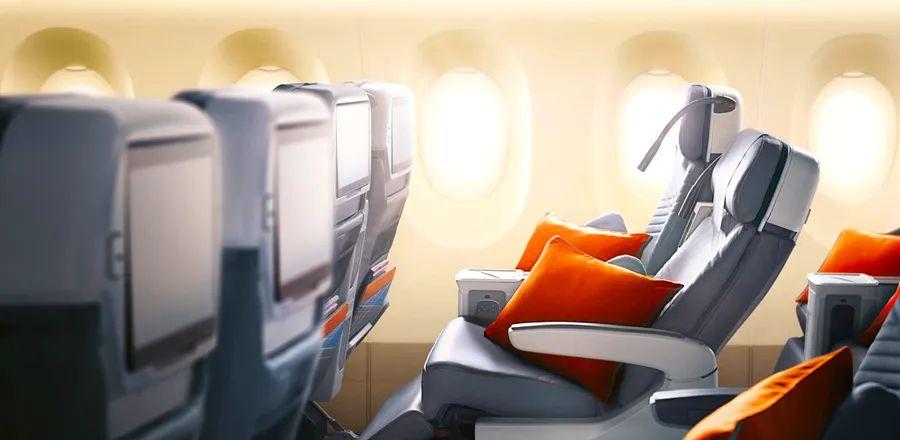Nonstop Flights vs. Layovers: Evaluating the Advantages and Disadvantages of Direct Travel

For those travelers who prioritize nonstop journeys regardless of duration or price, this is a golden age. Among the world’s 10 longest flights, Singapore Airlines operates two routes between Singapore and New York City that last nearly 19 hours and cover over 9,500 miles; Air India's route from San Francisco to Bangalore takes almost 18 hours. These flights are part of a growing trend in super long-haul air travel over recent years.
Qantas, which currently operates a 17-hour and 40-minute flight from JFK to Auckland, New Zealand, is set to introduce a 20-hour flight from London to Sydney in mid-2025. If launched, it will become the longest flight in existence.
Not only international airlines are stretching their routes. Hawaiian Airlines offers an 11-hour nonstop service connecting Boston and Honolulu, marking the longest domestic flight in the United States at 5,095 miles.
Yet, while some passengers applaud the rise of ultra-long nonstop flights, others argue that spending so many hours on a single aircraft is excessive.
The Benefits of Ultra-Long-Haul Flights
For numerous globetrotters, a more direct route is preferred, even if it entails spending many hours on a single flight.
“I always opt for an ultra-long-haul flight instead of a layover,” stated Michael Meyer, an author and professor who often travels between the United States and Asia for talks regarding his nonfiction trilogy on China. His primary concern with layovers is that they elevate the chances of missed connections and lead to additional delays in an already lengthy journey.
Meyer, who is also a marathon runner, likens his approach to ultra-long-haul flights to training. “I break the trip into four segments mentally. I’ll dedicate the first four or five hours to a book I’ve been meaning to read, then take an Advil PM and catch four or five hours of sleep, followed by two movies for the next segment, and then return to reading,” Meyer explained, noting that this strategy transforms the experience into a more enjoyable journey rather than a grueling ordeal.

Image courtesy of Singapore Airlines
Nicola Farinetti, the chairman of Eataly, stated that no matter the distance or length of the flight, he always opts for direct routes as they are less stressful and help him keep to his schedule.
Alysha Chopra, a TV executive based in Singapore, frequently travels to Sydney, the United States, and Europe, having grown up in Sydney and thus accustomed to spending hours in the air. However, she favors fewer but longer flights. “While long-haul journeys can be exhausting,” Chopra remarks, “I prefer to arrive sooner rather than make a stop along the way.”
The Drawbacks of Long-Haul Flights for Some Travelers
Although the practicality of a single, extended flight is generally acknowledged, health concerns are worth considering, as noted by Sheryl Hill, founder of Depart Smart, a travel safety advocacy group now under AIG’s ownership.
“In general, air travel comes with health risks. At high altitudes, the oxygen is thinner, the air pressure is higher, and humidity levels are lower,” explained Hill. “This increases the likelihood of getting sick during a flight. Strengthening your immune system through exercise, adequate rest, and vitamins can serve as effective protection.”
She advised long-haul passengers to get flu vaccinations, carry their own filled [reusable] water bottles onboard, and generously use disinfectant wipes and hand sanitizer.
“We all believe that long direct flights are ideal, but they might not be suitable for everyone,” said Hill, highlighting that individuals at risk for blood clots or with specific medical conditions should consider shorter flight alternatives instead.
Others confessed that their seating position on the plane significantly impacts their ability to endure an extended in-flight experience.
“I will only take on a super-long-haul flight if I’m seated at the front of the plane where I can stretch and move around,” said George Morgan-Grenville, founder and CEO of luxury travel firm Red Savannah. He mentioned that when flying long distances in economy, he prefers to break the journey, spend a night on the ground, engage in proper exercise, and then continue. It’s important to note that Singapore Airlines does not offer a regular economy class on its super-long-haul nonstop flights, only premium options.
Sangeeta Sadarangani, founder and CEO of Crossing Travel in London, has family, clients, and employees worldwide and often undertakes long-distance travels herself. She stated that she almost always opts for flights with stopovers, allowing her to stretch her legs, make calls, check emails, and enjoy healthier meals along with cleaner restrooms compared to what’s available on board.

Image courtesy of Singapore Airlines
Airlines Enhancing Comfort on Long Flights
While some travelers may never embrace the concept of seemingly endless flights, Singapore Airlines and other long-haul carriers are continually making significant efforts to ensure that these extended journeys are as comfortable as possible, incorporating features like jet-lag-reducing lighting and more nutritious meals served onboard.
Singapore Airlines operates 9,500-mile flights between JFK, Newark, and Singapore using the ultra-long-range Airbus A350-900ULRs, which feature higher ceilings and larger windows compared to other Airbus models. These planes have a wider body and specialized lighting aimed at reducing jet lag. The cabin pressure is set to a lower altitude of 6,000 feet, in contrast to the typical 8,000 feet, and a HEPA airflow management system refreshes the cabin air every two minutes.
In collaboration with wellness brand Golden Door, Singapore Airlines has created menus focused on nutrition and hydration, along with guided stretching exercises accessible through the seatback entertainment systems available on their long-haul flights.
United and Qantas operate their super-long-haul flights using Boeing 787-9 Dreamliners, equipped with Boeing’s advanced ventilation systems and larger windows compared to the Airbus A350; these aircraft also maintain a lower cabin pressure.
The Future of the World’s Longest Flights
“These flights primarily emphasize a blend of reduced flight time and added convenience,” stated John Grant, a partner at aviation consulting firm MIDAS Aviation, discussing the recent increase in long-haul flights.
However, he noted that "the 14-hour-plus flight durations are testing both the service needs of passengers and the ingenuity of airlines in their in-flight offerings."
Whether you love them or dislike them, it's likely that we will see the introduction of more super-long-haul flights soon, particularly due to technological advancements in aircraft that are enabling these extraordinary journeys.
This article was first published in 2018 and most recently updated on July 5, 2024, incorporating the latest information.

1

2

3

4

5
Evaluation :
5/5